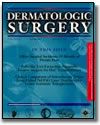Effect of external ultrasound postliposuction: a side-to-side comparison study.

Dermatologic Surgery
2000 Abstract
0005-433 Butterwick
Dermatol Surg. 2000 May;26(5):433-5. PMID: 10816230 Butterwick KJ, Tse Y, Goldman MP.
Dermatology Associates of San Diego County, Inc., San Diego, California 92024 USA. dadee7@cts.com
BACKGROUND:
External ultrasound (EUS) has been used as a therapeutic modality
for more than 30 years by multiple medical specialists, primarily for
stimulating the repair of soft tissue injuries and relieving pain. It has also
been used to treat postoperative swelling after liposuction. There are no
controlled studies documenting the objective and subjective effects of EUS
following liposuction.
OBJECTIVE:
The purpose of this preliminary study was to
evaluate the role of EUS in the relief of postoperative symptoms following
traditional tumescent liposuction.
METHODS:
Twenty-five patients underwent
tumescent liposuction of the abdomen or hips. Within 2 weeks after the
procedure, a double-blind study was initiated in which EUS therapy was applied
at therapeutic energies to one-half of the treated area, while the other side
was treated with placebo settings. Patients were treated biweekly for a total of
six to eight treatments. Both objective and subjective parameters were assessed
during the subsequent side-by-side evaluations by the patient and observer.
RESULTS:
After four treatments, 18 of 25 patients had the same postoperative
symptoms on each side. Two had fewer symptoms on the EUS side and five were
worse on the EUS side. After completion of all treatments, 17 of 25 again had
the same symptoms on the therapeutic and placebo sides. Three had improved
symptoms and five were worse on the EUS side. The subjective findings revealed
that all patients believed the treatment helped significantly on both the
placebo and EUS-treated sides.
CONCLUSION:
EUS after liposuction of the abdomen
at the study parameters provided no objective benefit compared to placebo in
postoperative recovery. Patient acceptance and perception of benefit are high.
Further studies are needed to determine the optimal timing and energies required
for therapeutic value.
Publication Types:
Clinical Trial
Controlled Clinical Trial
